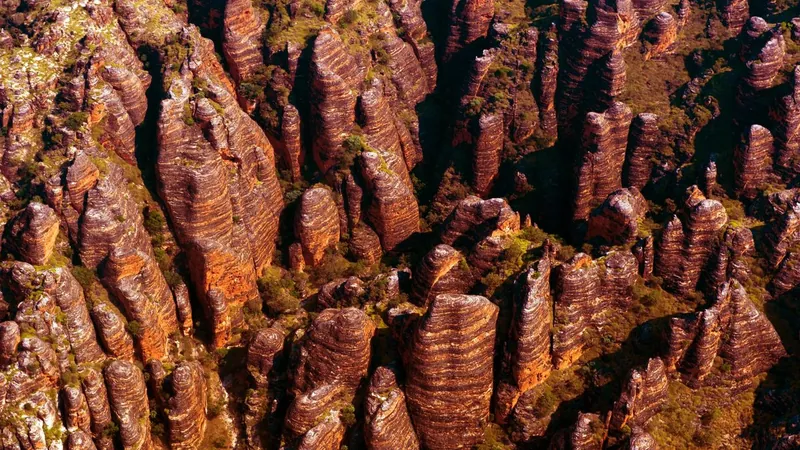
Discovering the Bungle Bungles: Nature’s Marvels in the Australian Outback Reveal Secrets of Early Life on Earth!
2025-01-17
Author: John Tan
Introduction
The Bungle Bungles, a stunning formation of sandstone towers, present a breathtaking sight in Western Australia. Renowned for their striking orange and dark-gray stripes, these geological wonders are not just visually appealing, but they also hold significant historical importance regarding the earliest life on Earth.
Historical Context
While Indigenous peoples have called this area home for thousands of years, the Bungle Bungles were largely unknown to the outside world until the 1980s, when filmmakers captured their beauty while shooting a documentary. This moment brought the dramatic landscape into the limelight, unveiling a hidden gem within the vast Australian outback.
Location and Recognition
Located within Purnululu National Park, which spans nearly 600,000 acres (240,000 hectares) in the Kimberley region, the Bungle Bungles are a UNESCO World Heritage Site, recognized in 2003 for their "incredible natural beauty" and "outstanding geological value." The very name "Purnululu" translates to "sandstone" in the local Indigenous language, emphasizing the incredible geological features that define this breathtaking landscape.
Geological Features
These sandstone towers are fascinating examples of cone karst formations, featuring beehive-shaped hills that create an extraordinary terrain resembling an egg carton. Towering at approximately 980 feet (300 meters) above the surrounding grassy plains, the Bungle Bungles are located about 6 miles (10 kilometers) southwest of the Piccaninny Crater, a remarkable meteor impact site dating back less than 360 million years.
Geological History
The fascinating geological history of the Bungle Bungles begins with sandstone that was deposited around 360 million years ago. Over the past 20 million years, wind and water eroded the landscape, sculpting the formations we admire today. The vibrant orange and dark-gray stripes that adorn the towers are remnants of their ancient oceanic past. Each band corresponds to layers of an ancient seabed: the gray layers are rich in ancient microscopic algae, while the orange layers signify periods of dryness where oxidation occurred.
Significance of Ancient Life
The orange layers, which dried out too quickly for the microscopic algae, highlight the changing environmental conditions over millions of years. These algae, also known as cyanobacteria, are considered some of the earliest life forms on our planet, making the Bungle Bungles a vital site for understanding Earth's evolutionary history.
Exploration and Wildlife
Adventure seekers can explore Purnululu National Park, with numerous hiking trails winding through the gorges nestled between the iconic sandstone domes. Wildlife enthusiasts will be delighted to discover that the Bungle Bungles are home to around 130 bird species, as well as numerous native animals, including the fascinating nail-tail wallabies and short-eared rock wallabies.
Conclusion
If you're looking for a breathtaking journey that combines natural beauty with ecological significance, the Bungle Bungles in Australia are undoubtedly a destination that promises to captivate your imagination! Don’t miss out on exploring this natural wonder and uncovering the secrets it holds!




 Brasil (PT)
Brasil (PT)
 Canada (EN)
Canada (EN)
 Chile (ES)
Chile (ES)
 Česko (CS)
Česko (CS)
 대한민국 (KO)
대한민국 (KO)
 España (ES)
España (ES)
 France (FR)
France (FR)
 Hong Kong (EN)
Hong Kong (EN)
 Italia (IT)
Italia (IT)
 日本 (JA)
日本 (JA)
 Magyarország (HU)
Magyarország (HU)
 Norge (NO)
Norge (NO)
 Polska (PL)
Polska (PL)
 Schweiz (DE)
Schweiz (DE)
 Singapore (EN)
Singapore (EN)
 Sverige (SV)
Sverige (SV)
 Suomi (FI)
Suomi (FI)
 Türkiye (TR)
Türkiye (TR)
 الإمارات العربية المتحدة (AR)
الإمارات العربية المتحدة (AR)